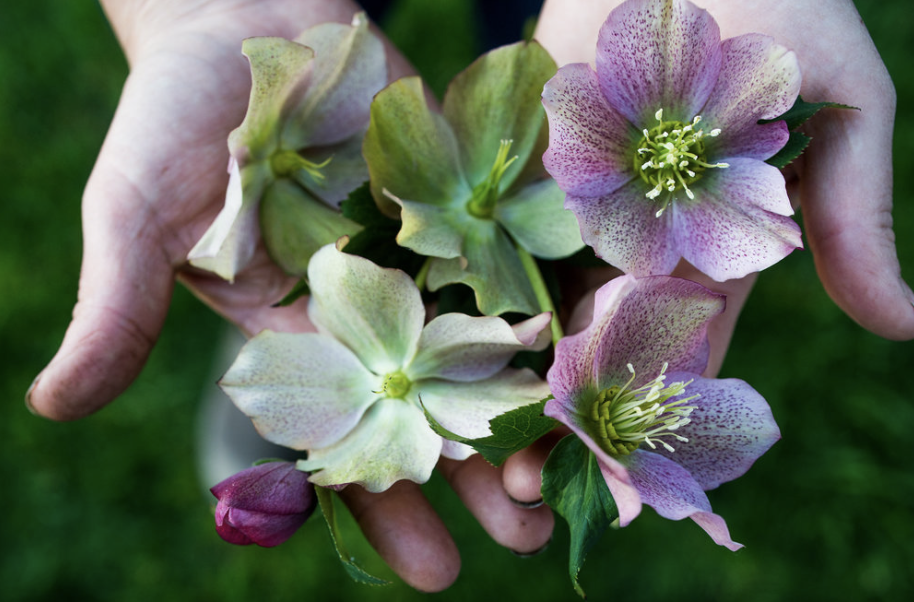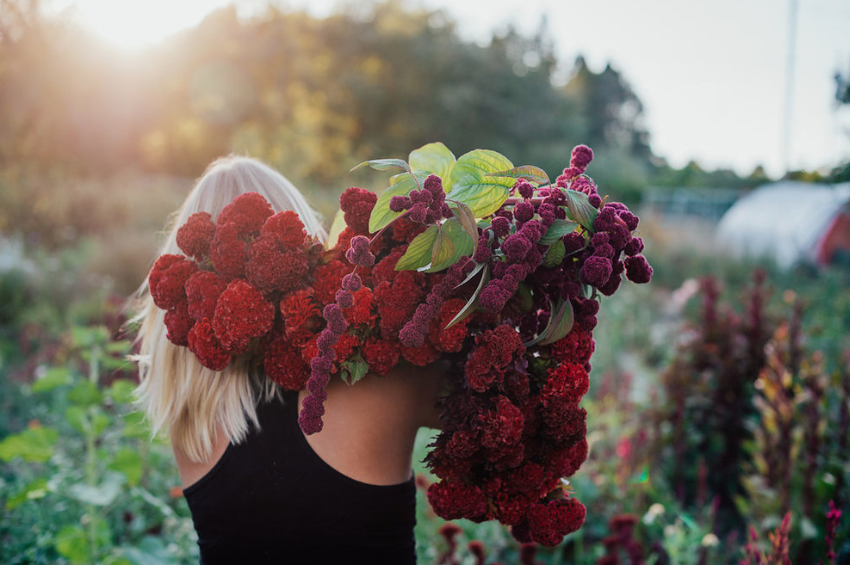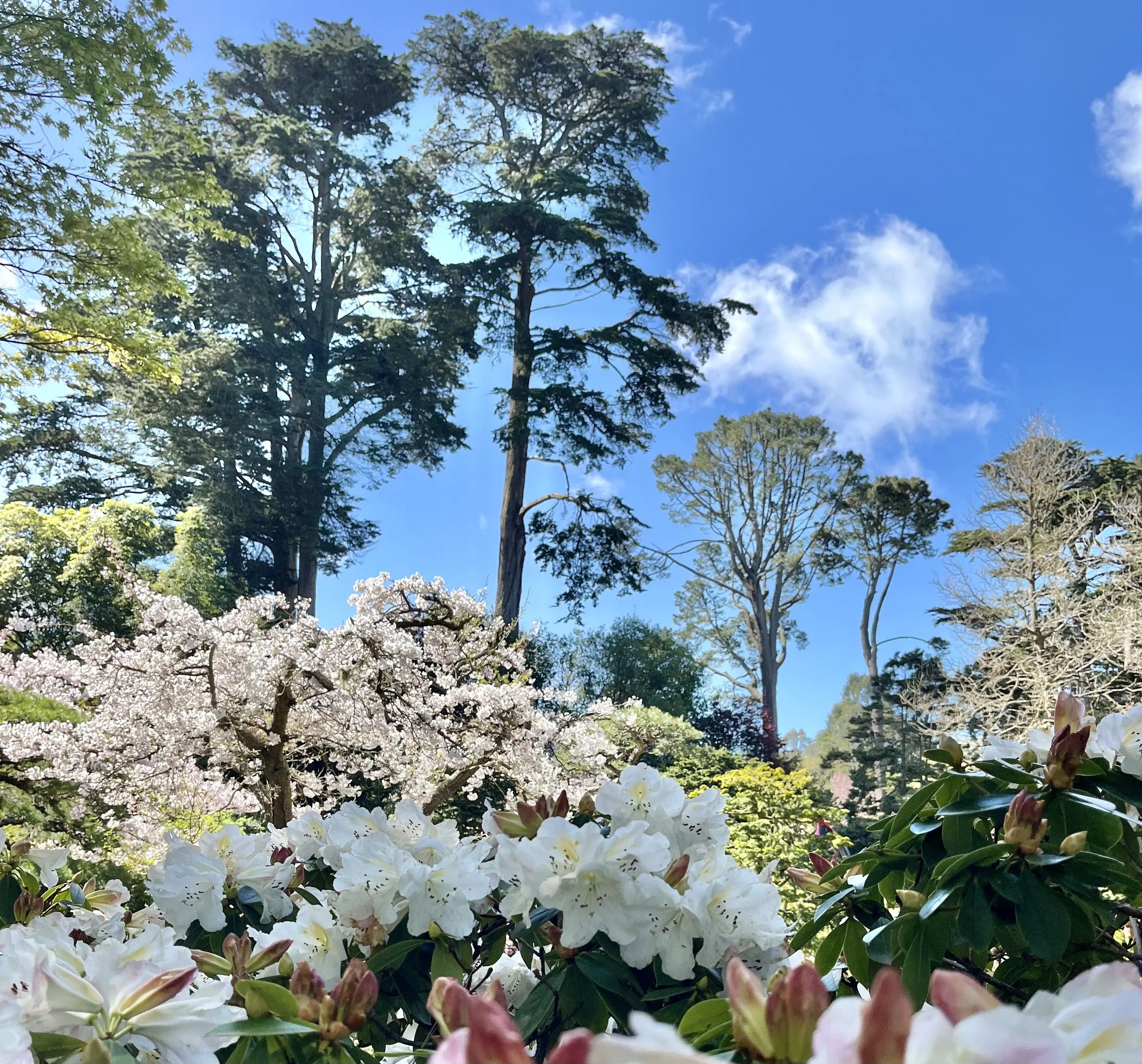CREATIVE CONVERSATIONS
Full Bloom Flower Farm
Hedda Brorstrom
is a flower farmer and florist for Full Bloom Flower Farm. Designing vibrant bouquets for everyday joy as well as for weddings and special events, Hedda’s bountiful creations reflect an appreciation for the cycles of each season, spilling over with color and a natural ease.
Started in 2013, Full Bloom uses no-till methods to grow thousands of chemical-free varieties of flowers for its two farmstands in Sonoma County as well as for imaginative installations and wholesale orders to florists and stores. Seasonally, the farm offers flower bouquet subscriptions, following the model of a community-supported agriculture (CSA) share.
A founding member of the North Bay Flower Collective, Hedda loves collaboration and learning within the local floral community. Hedda holds certificates in Ecological Horticulture from UC Santa Cruz and herbalism from the California School of Herbal Studies as well as a degree in Conservation and Resource Management from UC Berkeley.
Before flower farming, Hedda worked for years as a school garden teacher in San Francisco, as a wetland restoration instructor at Save the Bay, and as an interpreter for the California Academy of Sciences. Today she focuses on promoting sustainable flowers and believes that being both a farmer and a florist provides an opportunity to give extra care and attention, from seed to centerpiece.
Where you can find Hedda
In-person farmstands:
• Sebastopol, CA: 9516 Graton Road
• Petaluma, CA: 3855 Roblar Road
What drives you to create and put your work out into the world?
I was such an academic person, but every time I took a practical hands-on gardening or farming class it felt so right. I have always loved art, but was never able to fine tune my skills. I feel that flowers offered the ability to paint with structures that already were made.
I love being able to grow the products that then become part of important ceremonies. I am passionate about local and organic blooms, they matter so much not just for the environment, but for the florist’s hands and our homes.

What were some of the major points along the trajectory of your flower-related work?
I spent six months learning to farm at a special program at UC Santa Cruz after doing gardening while I was an undergrad at UC Berkeley. I have taken lots of courses at Occidental Arts and Ecology and I experiment a lot. I am part of the association of speciality cut flower growers to continue to learn everything floral.

“Flowers let me speak in a way
I could never do with words.”

What’s a non-negotiable for your creative workspace?
We work outside in natural light to design and are dependent on lots of water for staying hydrated. Using as few imports as possible each season is also incredibly important to us.
What are the environmental and social benefits of supporting local flower farmers, farmworkers, and producers, as opposed to purchasing imported flowers?
Imported flowers account for more than 80 percent of cut-flower sales in the U.S. Imports are flown long distances (the U.S. gets most of their flowers from Columbia and Ecuador) and then go up for sale on a daily auction in Florida–where they are then again reshipped and boxed. Those flowers are sprayed with an ozone-depleting gas when traveling across the entire country. This fumigation process is part of a long, toxic lifecycle. Other countries do not have as strict chemical regulations in the field as well, so imported flowers can be grown with high levels of herbicides and pesticides.
Journalists have been sounding the alarm about the amount of sprays and chemicals used, the environmental impacts of shipping imported flowers long distances, and the worker conditions in the industry for some time, though most people still remain unaware of so many of the very dangerous issues with imported botanicals.
Personally, I have freelanced for some bigger florists who use imports and my skin has broken out in rashes. It is common for older floral designers to develop cancers, and I cringe when I see people decorate their cakes with imported flowers and bring them into their homes, all without knowing of the additional chemical exposure that’s coming into their homes.
How do slow-flower farming practices differ from conventional ones?
Regenerative farming means adding more than you are taking from the land. We add about 20 yards of compost per acre each season and don't use any chemicals when growing. We foster habitats for bees, butterflies, birds, and soil life. We work hard to store water in our land and build our soil biology every season. The quality of our flowers and life force of the ecosystem shines through in our blooms and helps the entire local community of pollinators.

Tell us about your wildest floral design experience.
I got to design an entire dress made of flowers for a magazine, but the wildfires broke out and we were shooting with helicopters going over with water.
What’s the best piece of advice you’ve been given that’s helped shape your work?
Start small and don’t grow too much the first year. And plant peonies today.


What role do flowers play in your life, and what benefits do they provide for your emotional and mental well-being?
Flowers pretty much rule my life, from the first seeding to putting the beds to rest in the winter. Flowers let me speak in a way I could never do with words–they let me gift beauty in moments that need it the most. They let us mark occasions with seasonality so that each year we remember events based on the opening of a bloom. I am so grateful to be the community florist for my town!
What would you create with flowers if you had unlimited resources?
I’d love to do a large installation of flower beds, each focused on different scents, for people to get inside of and experience each plant in a fully immersive way.
Handpicked
A few of Hedda’s favorites…
Favorite flower
Garden roses
Favorite season
Spring
Current color obsession
Orange, blue, & brown
Favorite botanical destination
San Francisco Botanical Garden
Your last great read
Flower Confidential by Amy Stewart
Creative hobbies & fun activities
Everything! Cooking, fermenting, botanical dyes, herbalism, & anything to do with plants
Thank you so much, Hedda!
Image credits: Hedda Brorstrom
You may also like…
More interviews with floral-inspired artists & designers who are blooming in creative directions
Tattoo artist - Oakland, California
Gardener & designer - Potomac River, West Virginia
Flower farmer & restaurant owner - Sonoma County, California
We respect your privacy, and when you click “Sign Up,” you are confirming that you agree that information you submit will be protected and used as permitted in our privacy policy and terms. If you do not agree to any of these terms, you may not submit this form.


















